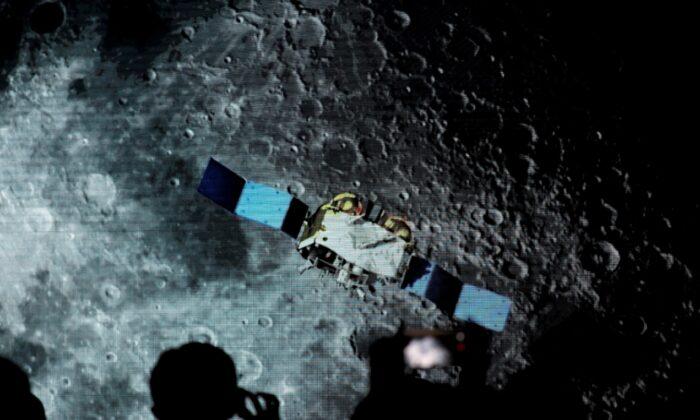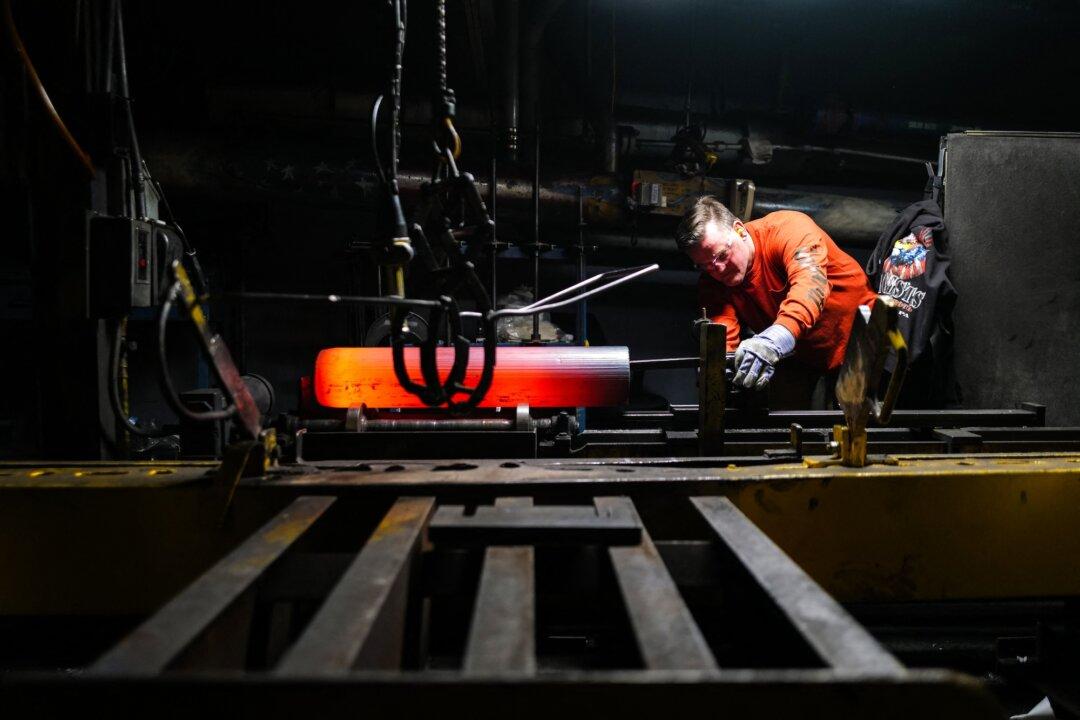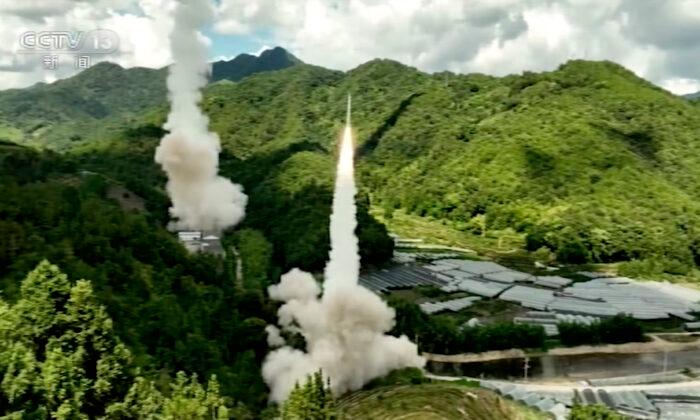China’s program to put people on the moon is gathering momentum. Still, when they arrive, the United States and its 25 Artemis Accord partner nations may require novel missile defenses on the moon.
Recent statements by Chinese space officials show increasing confidence that China can send people to the moon “before 2030.”
On April 25, Chinese Lunar Exploration Program Chief Designer Wu Weiren told Chinese state television: “By 2030, the Chinese people will definitely be able to set foot on the moon. That’s not a problem.”
Then on May 29, just before the launch of the Shenzhou-16 manned spacecraft, China Manned Space Agency Deputy Director Lin Xiqiang stated: “Recently, the moon landing phase of China’s crewed lunar exploration program has started. The main goal is to send Chinese astronauts to land on the moon for the first time by 2030.”
That same day, another official was interviewed on Chinese state television outlining the test program for China’s 27-tons to-the-moon capable Long March-10 space launch vehicle (SLV).
In early November 2022, a Chinese space official noted that the Long March-10 could begin testing in 2027.
The latest information is that China may carry out four unmanned launches of the Long March-10 before the fifth and sixth missions to conduct the first Chinese manned mission to the moon by 2029 or 2030.
The Long March-10 will require the simultaneous launch of two SLVs to put people on the moon—one to carry a new generation manned spacecraft and a second to carry a new Chinese moon landing vehicle. They will dock in lunar orbit to transfer the crew to the lander before it descends to the moon’s surface.
However, China’s new moon landing vehicle presents a possible hazard to the moon bases of other nations, sufficient to consider the deployment of defensive weapons by the time China begins its moon missions.
A Chinese exhibition in early March in Beijing, which coincided with the annual “Two Sessions” of the Chinese Communist Party (CCP), for the first time displayed a model of the Chinese moon landing vehicle—which for China amounted to a “press release” confirming previous disclosures about its configuration.
Copying the concept of the former Soviet Union’s single-cosmonaut carrying Lunniy korabyl or “LK” moon lander, the Chinese moon lander consists of two stages.

One is a large booster stage that completes the moon lander’s trip to lunar orbit but then provides most of the fuel and propulsion to decelerate the moon lander down to a low altitude above the moon.
When it reaches that low altitude, the booster detaches and crashes to the moon, while the manned single-stage moon landing vehicle completes its descent to the lunar surface.
It will also have the fuel to ascend back to lunar orbit for crew transfer for the return trip to Earth.
Initially, this two-stage moon landing vehicle will take two Chinese astronauts to the moon for a brief visit. Still, as early as 2018, Chinese briefings also revealed that this Soviet-era two-stage concept will be used to transport large, pressurized moon rovers and large moon habitats to the lunar surface.
Currently, both the U.S. National Aeronautics and Space Administration (NASA) and the Chinese are interested in the same 10 to 13 or so lunar landing locations on the south pole of the moon.
Both countries view the moon’s south pole as an early strategic objective, as this location has a higher probability of yielding minable lunar water ice, from which they can eventually process oxygen and rocket fuels.
But as China begins to build its manned moon bases, its method for arriving on the moon will include “bombing” the moon’s surface with its expended moon lander boosters, which could threaten the moon settlements of the United States and its now 25 Artemis Accord partner nations.
Even if the expended Chinese boosters miss the U.S. and other Western moon bases, it is likely that potentially toxic propulsion chemicals from the Chinese booster crash will contaminate lunar ice deposits that could be used by all moon-faring nations.
It is reasonable to consider that China has the technical skill to design a two-stage moon lander similar to the Lockheed lunar excursion module (LEM) of the U.S. Apollo Program, which used a first stage to achieve the moon landing—without crashing—and then a second stage for returning to lunar orbit.
Occasional Chinese images of moon landers, some used by Chinese space organizations, suggest interest in a LEM-like two-stage lunar lander. Still, no model of that concept has appeared in Chinese exhibitions.
In contrast, NASA-funded lunar lander concepts from Elon Musk’s SpaceX Corporation and a team led by Jeff Bezos’s Blue Origin are reusable single-stage spacecraft that can descend from lunar orbit to the moon’s surface and return for crew transfer back to Earth.
Again, like the LEM, there is no intention to “crash” onto the moon’s surface.
In an article published in Chinese state media China Daily on May 30, the director of the Laboratory for Space Research of the University of Hong Kong, Jin Ding, wrote: “The US should not fear China’s emergence. Instead, it should cash in on the opportunities and markets that this emergence brings for win-win collaboration, cooperation and competition.”
However, a Chinese refusal to change its moon landing systems means the United States will have to consider an early placement of a defensive system to protect U.S. and partner nation astronauts from Chinese “bombs.”
A missile-based defensive system may achieve the goal of saving lives on moon bases, but a missile impacting the Chinese booster will still create a debris field and may not eliminate contaminant fuels.
Perhaps another solution would be a four- or six-corner adhesive-covered net, fired by four or six missiles with enough thrust to carry the Chinese booster away from the moon.
But the larger issue is that despite self-serving Chinese propaganda, the United States and its Artemis Accord partner nations have real reason to fear China’s arrival on the moon.
As it pursues military hegemony on Earth, the CCP is also preparing to impose its hegemony on the Earth-moon system, including the militarization of its moon bases.
China’s use of moon “bombing” boosters that endanger other countries constitutes the lunar corollary of the CCP’s callous disregard for life on Earth.
The United States may be forced to consider the early deployment of lunar defense systems.





